Magic Time
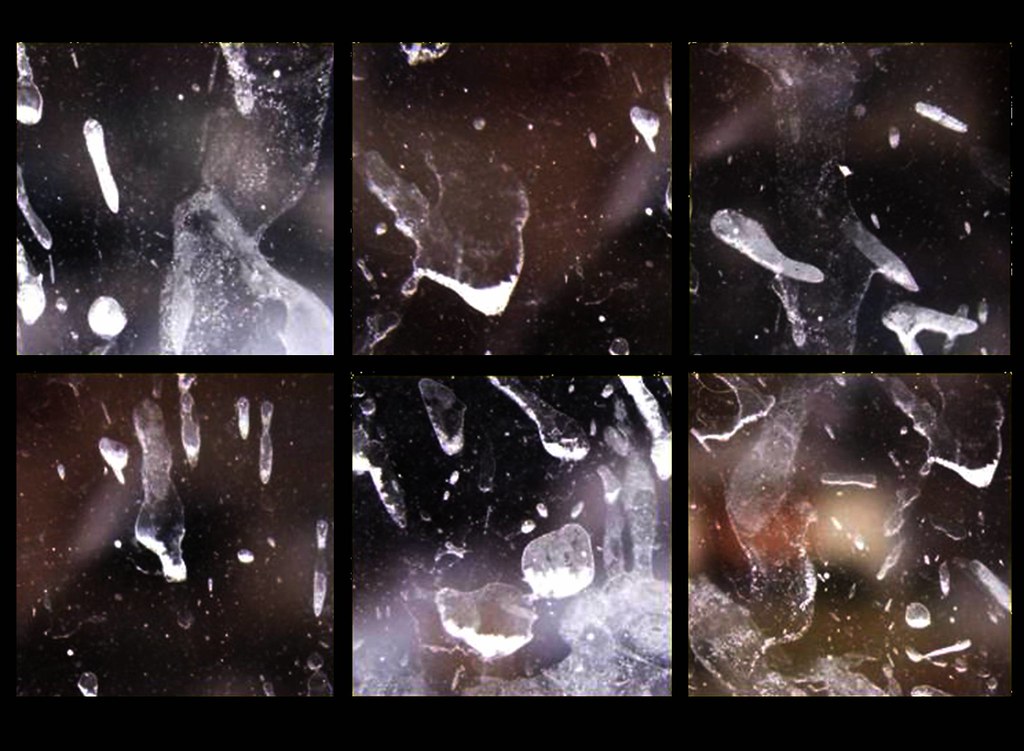
Postcards From the Cosmos: a dirty window's wealth of galaxies
Years ago I was the first woman to carry a Janus double-head -- one of many -- high on a pole during Boston's First Night procession. It was heavy plaster of Paris; I had carried it for blocks in heavy winds and my thighs were bruised for weeks afterwards. But I had been thrilled to hoist up the ancient god who looked backwards and forwards at once.
The last week of the year has always been a magical time for me. A cycling back to the beginning as the Earth circles the Sun and spirals through time: not a linear passage but more like a cosmic Slinky....
Mary and I had dinner out and a leisurely evening walk on Christmas Eve. By Christmas Day we were in the midst of heavy rain bands and settled in for a cozy day indoors with the cats.
The sky cleared enough in-between for me to watch sunlit clouds racing outside my window. At lower left is the wind turbine on my next-door neighbor's roof. At the time I took this shot it was spinning rapidly. (I've watercolorized and color-manipulated the shot somewhat.)
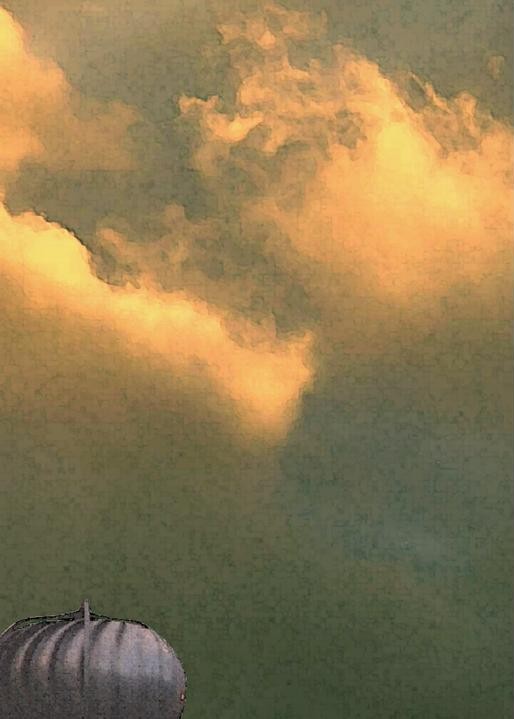
Then the weather cleared, and I started venturing out into the predawn. Sometimes Mary is already awake and has gotten the morning paper. In my quest to photograph the Moon in its various phases I have begun setting my alarm for 6 AM.
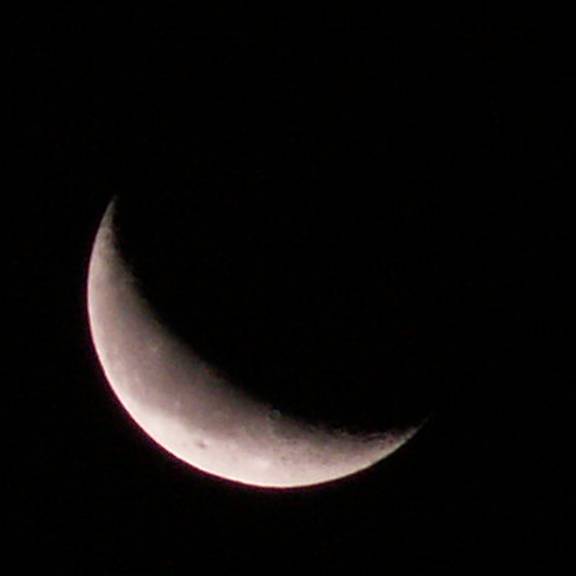
On December 26 the Moon was 25% of full. Not only did I spot it on its approach toward conjunction with Jupiter but I also spotted two artificial satellites. Since the Moon is our natural satellite, that makes three satellite sightings in all.
According to Heavens Above, between 5:08:58 AM and 7:02:32 AM (EST) I could theoretically have seen 19 artificial satellites, down to magnitude +4.5, from here. (The human eye can see objects as dim as +6 or +7 magnitude; the Moon's is -12.7 when full. A good explanation of magnitudes is here.)
Based on Heavens Above's satellite table and tracking data, I believe I had seen the GPS 2-05 Rocket 1 (magnitude 3.5) before I started taking photos and the Russian spacecraft Cosmos-1656 (magnitude 4.4) after I had finished. Artificial satellites appear in the sky as somewhat dim dots, non-blinking, crossing the sky at a steady pace. They grow progressively dimmer and then fade out as they pass into the Earth's shadow. The South African Astronomical Observatory gives more information on tracking and viewing artificial satellites with the naked eye.
According to the U.S. Coast Guard Navigation Center, the GPS Space Segment "consists of a minimum of 24 operational satellites in six circular orbits 20,200 km (10,900 NM) above the earth at an inclination angle of 55 degrees with a 12 hour period. The satellites are spaced in orbit so that at any time a minimum of 6 satellites will be in view to users anywhere in the world. The satellites continuously broadcast position and time data to users throughout the world." GPS 2-05 Rocket 1 launched on December 11, 1989 (UTC).
According to Anatoly Zak's Russian Space Web, Cosmos-1656 is part of the Tselina (Virgin Land) space-based electronic intelligence system. Launched on May 30, 1985 (May 31 UTC), Cosmos-1656 is a high-sensitive Tselina-D spacecraft.
I saw no artificial satellites this morning, but instead the Moon and Jupiter keeping close company 7 hours after conjunction.
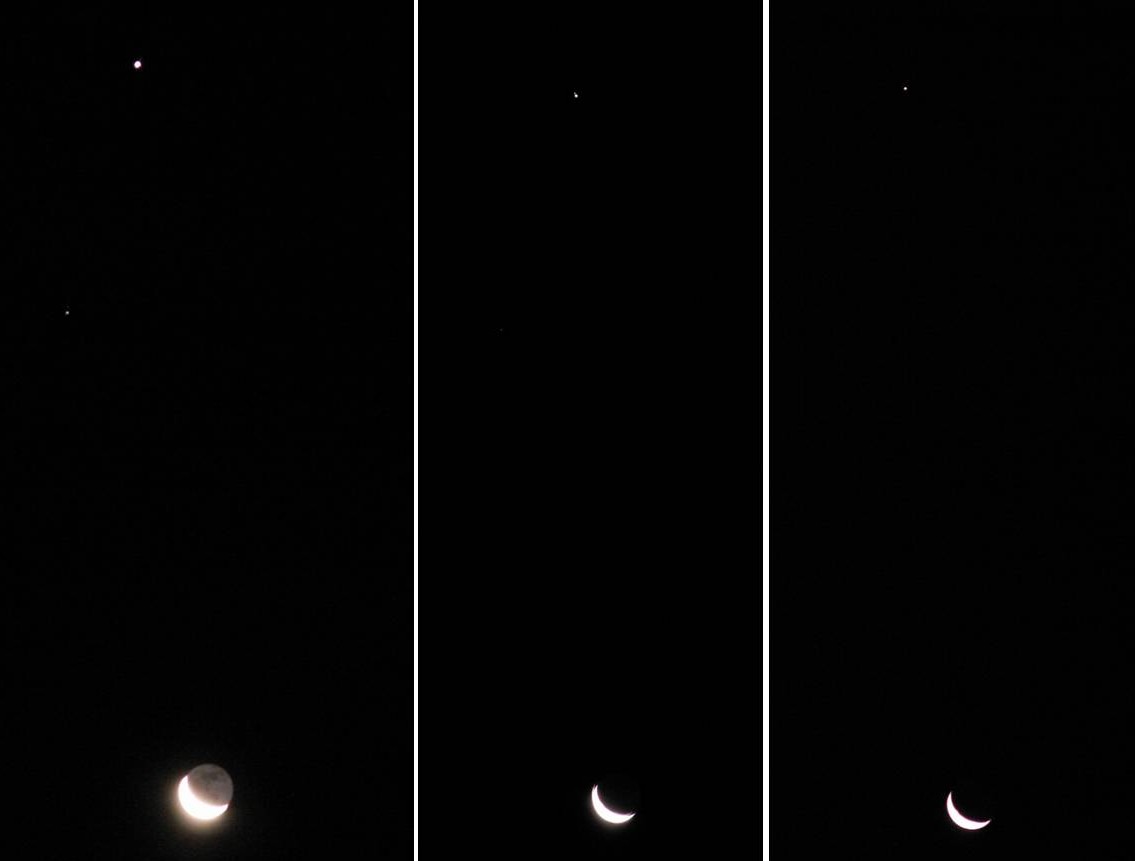
Jupiter is up top. The leftmost exposure shows a star beneath and to the left of it -- likely Zubenelgenubi, the brightest star in Libra (magnitude 2.75). The middle exposure yielded an image of Jupiter with a separate dot to its upper left. A check of Galsat (one of several astronomical freeware and shareware programs available at Dan's Astronomy Software) shows all 4 of Jupiter's Galilean moons -- Io, Europa, Ganymede, and Callisto -- to Jupiter's left. That dot may thus represent one or more of the Galileans, which are visible in binoculars. (If one, my guess is Ganymede, which is the largest and brightest of those moons.) Jupiter from the middle panel is enlarged below:
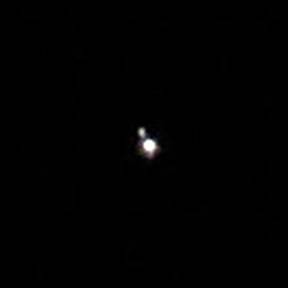
Jupiter and companion, enlarged
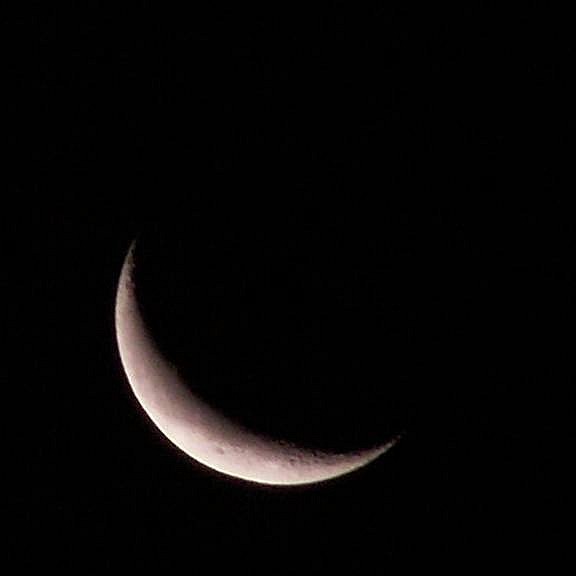
This morning's Moon, 16% of full.
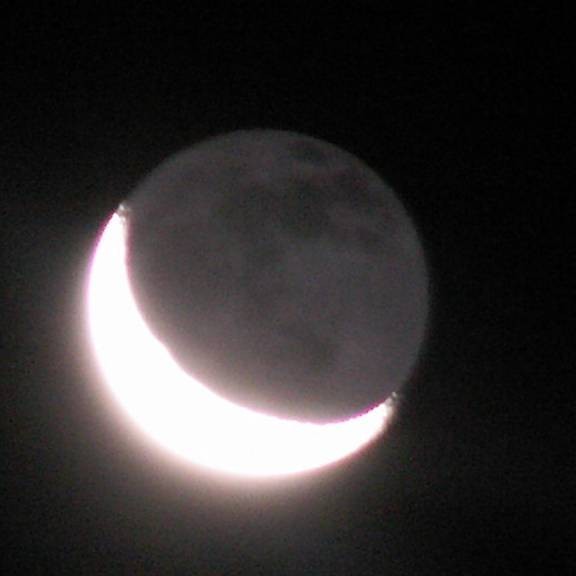
Earthshine (explained here)
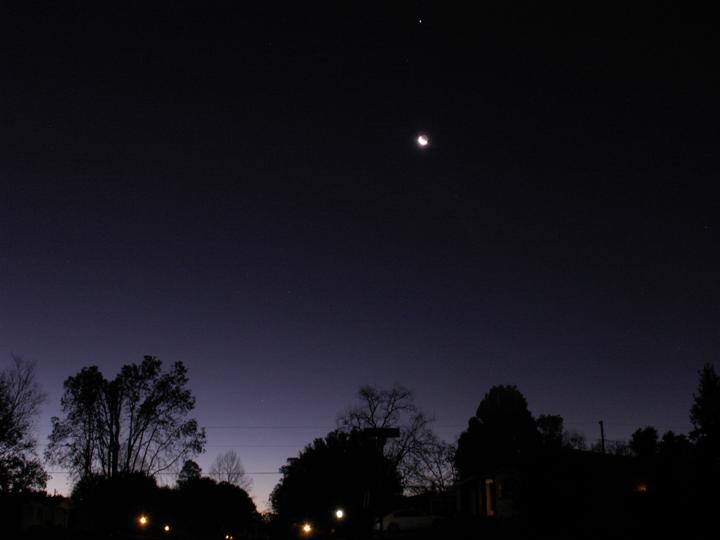
The Moon (overexposed to show Earthshine) and Jupiter are right of center, near the top. Below and to the left of center, above the utility wires and in close-up below, is Antares ("rival of Mars", magnitude 0.96), the brightest star in the constellation Scorpius.
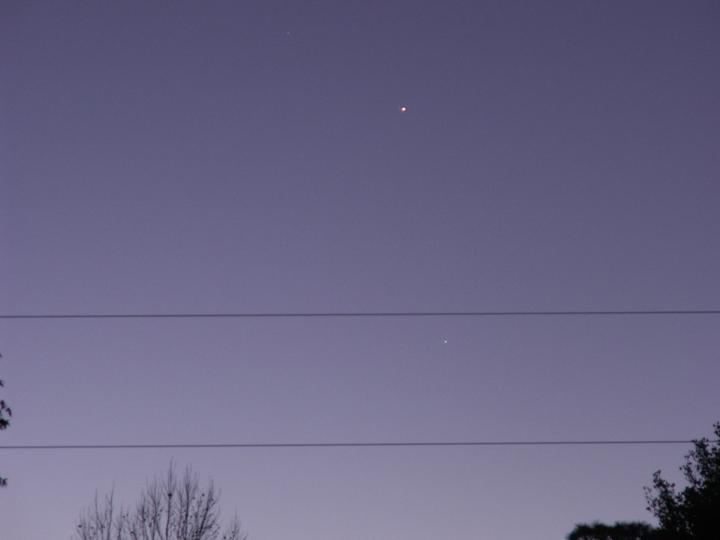
Antares is near the top. Below it, beneath the top wire, is Tau Scorpius (magnitude 2.81). I was hoping it was the planet Mercury, but Mercury (currently in the constellation Ophiucus, "The Serpent Bearer"), was very close to the horizon, likely lost behind the trees.
On our walk today Mary pointed out this photo op:
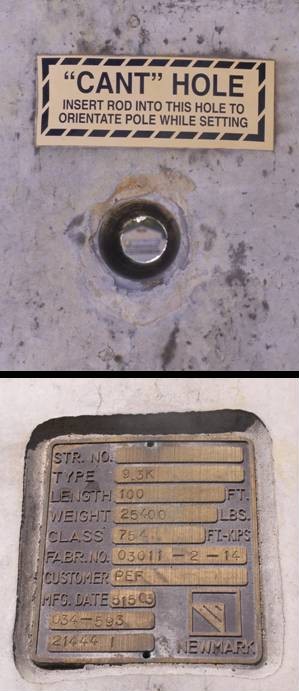
"Cant" here actually means "tilt". This hole goes all the way through a thick, concrete power pole (a newer version of the wooden one shown here). According to its plaque, the pole is 100 feet tall and weighs 25,400 pounds.
I had spotted our local firehouse being re-roofed and took these from across the county road, finally getting in a shot of the firehouse mural.

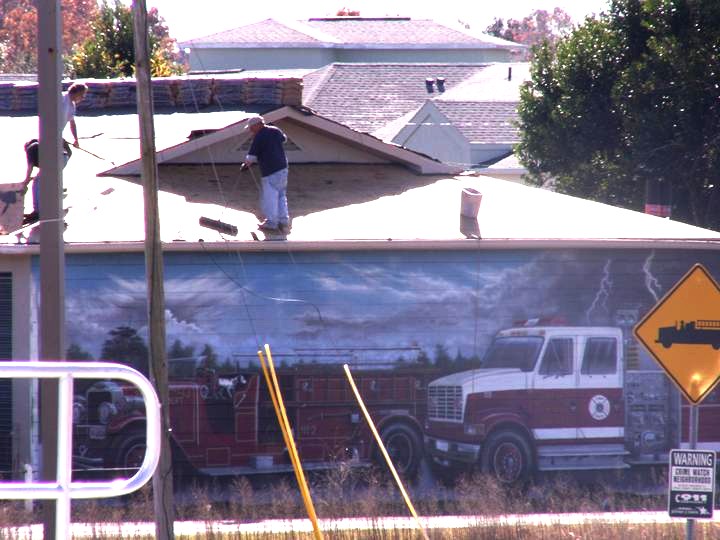
I'm also learning how easy it is to make stereograms -- at least the "still life" kind where nothing moves between shots. (More sophisticated equipment and even disposable cameras can be rigged to take two photos simultaneously, from different stereoscopic angles -- but I just move a little bit between shots.) The idea is to view these with one's eyes crossed, relaxing one's gaze while focusing on the "center" image, which will become 3D. (I'd played with a ViewMaster as a kid, in which stereograms were set inside cardboard discs that I advanced by pressing a plastic lever.)
Some folks have an easier/harder time with these than others -- Mary hadn't viewed stereograms in 20 years and had some difficulty. I'm at the point (thanks to Flickr's Stereophotography pool) where I can view them pretty much instantly.
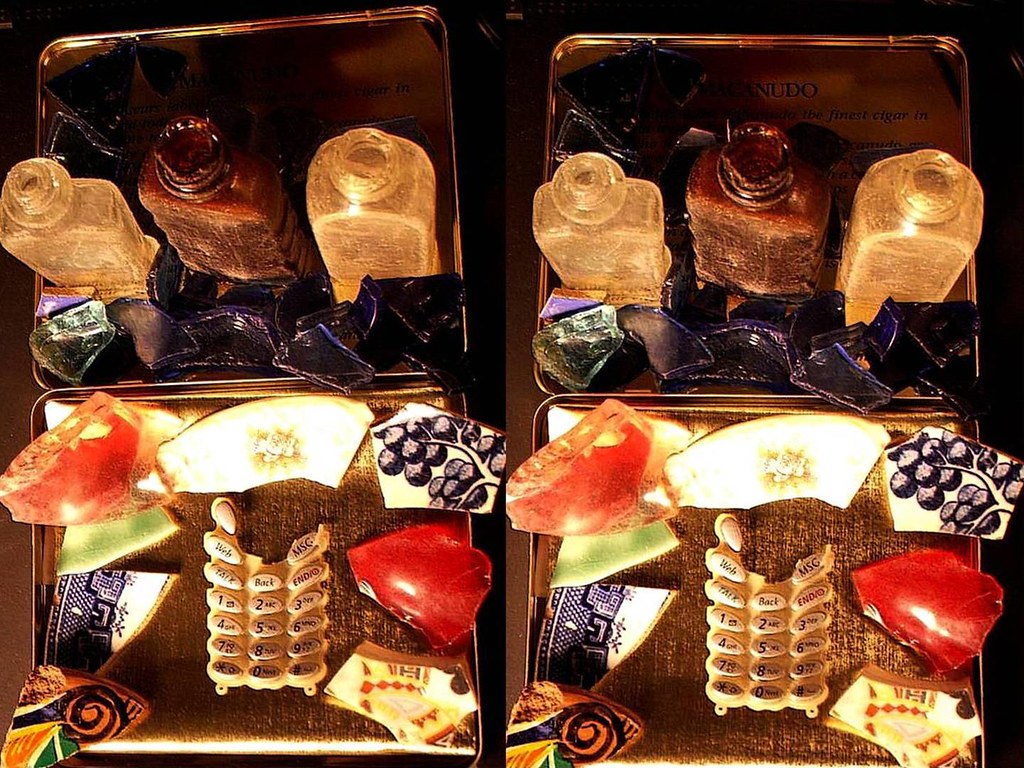
Still Life With Interrupted Communication
I got into mixed media art thanks to street "trash" and low tides. The small bottles and most of the broken glass and crockery come from Dorchester Bay in Boston. The broken piece in the lower left corner was a gift from our former landlady, who subsequently bought a mixed-media sculpture in which I incorporated its companions. The street yielded up a smashed cell phone whose keyboard I've placed inside another gift from the gutter: a gold foil-lined box, discarded empty, that had once held Macanudo Ascot cigars.
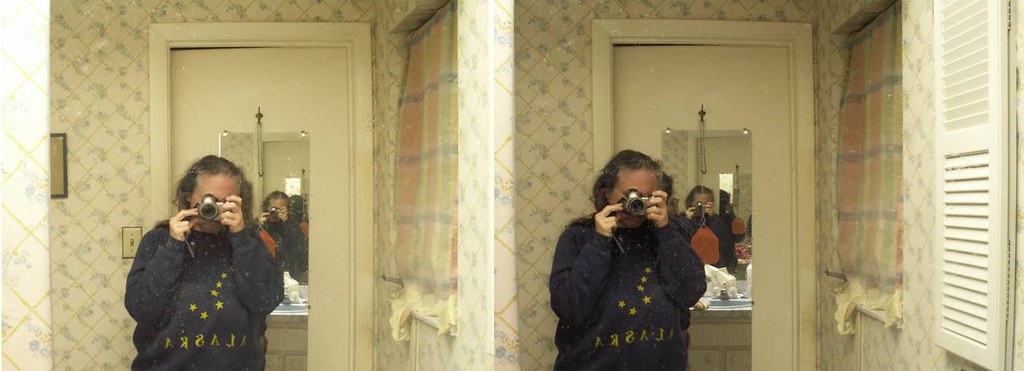
Mutual mirror reflections combine with stereoscopic depth. The camera lens reminds me of a ViewMaster picture that gave the illusion of staring straight down the barrel of a gun. (I like staring down the camera lens better.)
And, of course, the Cant Hole!
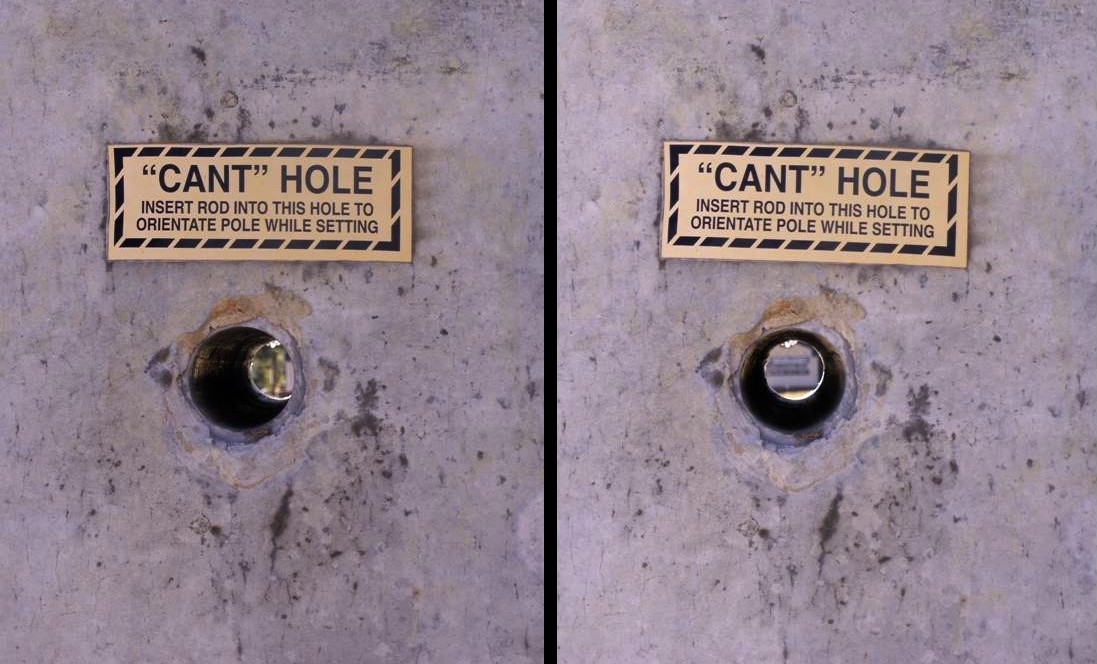











2 Comments:
excellent. I always avoided First Night because I can't take that much cold.
I did once walk 25 miles for a march against drug abuse through Boston once and got some terrible blisters!
Post a Comment
<< Home